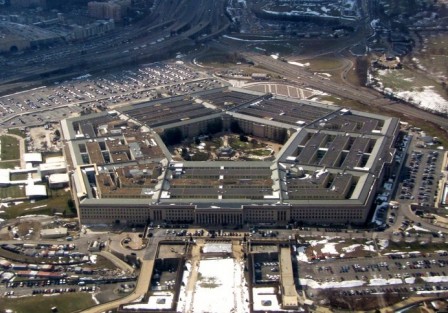Great Recession: Are War Spending And Wealth Concentration To Blame?
A superficial analysis of the recession and the global financial crash, with their long lasting effects on the world economy, put the blame on the burst of the US real estate market bubble. However, some much bigger forces and overall budget trends have being at play for 30 years within the US economy. In the recession that started in December 2007, the burst of the real estate bubble was more a symptom than the root of the systemic problems.
The real systemic problems are two folds: Firstly, the out of control increase of the defense and security budget which, including the cost of the wars in Iraq and Afghanistan, represents about 25 percent of the overall federal budget. Secondly, the increase of income gaps between the very rich and everyone else.
Income Gaps Today Are As High As In 1928
The Center on Budget and Policy Priorities (CBPP) has recently published data showing that income gaps between the very rich and everyone else has more than tripled since 1979.
“The gaps in after-tax income between the richest 1 percent of Americans and the middle poorest fifths has more than tripled between 1979 and 2007. Taken together with prior research, the new data suggest greater income concentration at the top of the income scale than at any time since 1928,” wrote Arloc Sherman and Chad Stone the authors of the report.
Between 1979 and 2007, average after-tax incomes for the top 1 percent rose by stunning 281 percent. After adjusting for inflation, it represents an increase in income of $973,100 per household. In comparison, the increases in income was a modest 25 percent ($11,200 per household) for the middle fifth of households and a meager 16 percent ($2,400 per household) for the bottom fifth.
Additionally, in 2007, the average household in the top 1 percent had an income of $1.3 Million, up $88,800 just from the prior year. This $88,800 gain is well above the total 2007 income of the average middle-income household which was $55,300.
Wars On An Instalment Plan
In fiscal year 2010, the federal government is projected to spend $3.6 Trillion or 24 percent of the nation’s Gross Domestic Product (GDP). Of that $3.6 Trillion, $2.2 Trillion will be financed by federal tax revenues while the remaining $1.4 Trillion will be financed by borrowing. This deficit will be ultimately paid for by future taxpayers. In other words, it is our children and grand-children that will pick up the tab for the wars in Iraq and Afghanistan.
In 2010, the defense and security expenditure represents about 20 percent of the overall federal budget or $715 Billion. Added to this another 3.5 percent of the budget will be spent to provide care and benefit for war veterans. In comparison, only 3 percent of the budget will be spent on education. Meanwhile, the part of the budget that will be spent on paying interests on the debt has already skyrocketed to reach 6 percent. Paying interests on the huge national debt, which is projected to reach $9 Trillion by the end of fiscal 2010, will claim $209 Billion (or 6 percent) of the budget.
From 2001 to today, funding for defense programs has exploded. Since 2001, it has increased at an annual rate of 8 percent. Even when costs for Iraq, Afghanistan and the “global war on terror” are excluded, funding for the Department of Defense has risen at a stunning rate that dwarfs the growth rates for all parts of the domestic budget combined.
To read the full report on income gaps from the Center on Budget and Policy Priorities click here.
Related Articles
















One Response to Great Recession: Are War Spending And Wealth Concentration To Blame?
You must be logged in to post a comment Login